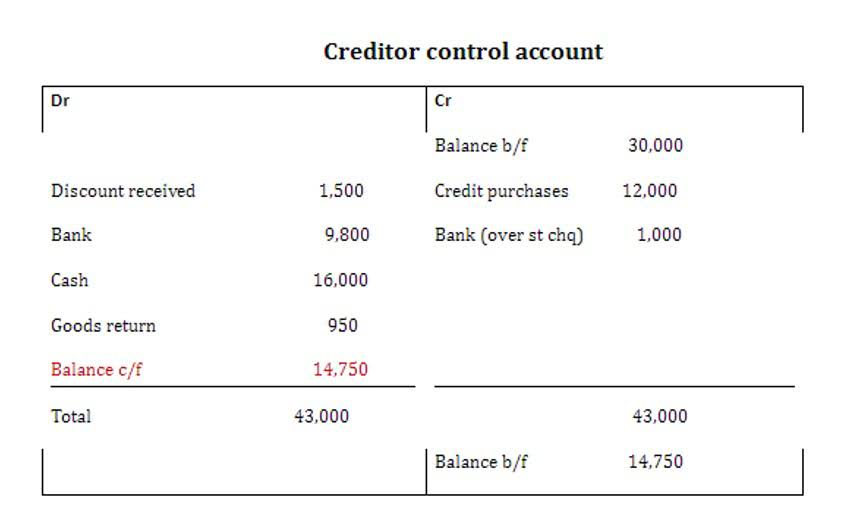
With such information, the business can plan on what to do with such expenses. contribution margin income statement format Additionally, it’s also easier to identify which expenses eat up most of the revenue. The contribution margin can then be used to assess how much a product or segment is performing. For example, raw materials cost increases the more products are manufactured.
INTERIM FINANCIAL STATEMENTS: How To Create The Reports(+Examples)

Because the direct costs of a segment are clearlyidentified with that segment, these costs are often controllable bythe Certified Bookkeeper segment manager. In contrast, indirect costs become segmentcosts only through allocation; therefore, most indirect costs arenoncontrollable by the segment manager. For example, thesalary of a segment manager may be direct to that segment and yetis noncontrollable by that manager because managers cannot specifytheir own salaries. To resolve bottlenecks, contribution margin can be used to decide which products offered by the business are more profitable and, therefore, more advantageous to produce, given limited resources.
#1. Revenue:
The two expense categories may contain both fixed and variable costs, which is why it can be useful to separate them using a contribution format statement. In a contribution margin income statement, variable cost of goods sold is subtracted from sales revenue to obtain gross contribution margin. The variable marketing and administrative expenses are then subtracted from gross contribution margin to obtain contribution margin. From contribution margin figure all fixed expenses are subtracted to obtain net operating income. The following simple formats of two income statements can better explain this difference.
Contribution Margin Income Statement vs Traditional Income Statement

A contribution margin income statement on the other hand categorizes expenses on whether they are variable or fixed. It is used to provide a clearer picture of which costs change along with the level of activity (variable costs), as well as which ones don’t (fixed cost). The contribution margin is found by deducting the variable expenses from the sales. If a business makes no sales, the contribution margin is recorded as zero and increases as the sales rise.
- If they exceed the initial relevant range, the fixed costs would increase to \(\$400\) for nine to sixteen passengers.
- As you can see there is a heavy focus on financial modeling, finance, Excel, business valuation, budgeting/forecasting, PowerPoint presentations, accounting and business strategy.
- The income statement is your friend when it comes to your business’s revenue and expenses.
- Because a contribution margin income statement categorizes expenses based on whether they are variable or fixed, determining which variable expenses can be reduced is much easier.
- Direct materials are often typical variable costs, because you normally use more direct materials when you produce more items.
Free SWOT Analysis Templates and Examples

Larger organizational segments can be further divided into segments within that segment. Media Masters has two large divisions–social media games and cell phone games. The social media games division can be further divided into product lines–role playing games and puzzle games. Variable costs probably include cost of sales (the cost of goods sold) and a portion of selling and general and administrative costs (e.g., the cost of hourly labor). Retail companies like Lowe’s tend to have higher variable costs than manufacturing companies like General Motors and Boeing.
Fixed costs and the segmented income statement LO4
In fact, we can create a specialized income statement called a contribution margin income statement to determine how changes in sales volume impact the bottom line. The contribution margin income statement calculates contribution margins instead of gross profits. As mentioned above, it does so by subtracting variable costs from revenues. Any remaining fixed costs get deducted from the contribution margin to reach the income for the company. This income is the same as the net profits reported on the traditional income statement.
- Contribution margin (presented as a % or in absolute dollars) can be presented as the total amount, amount for each product line, amount per unit, or as a ratio or percentage of net sales.
- Fixed costs are costs that do not change relative to the amount of production.
- A contribution format income statement, also known as a “contribution margin income statement”, separates a business’s costs into variable costs and fixed costs.
- If XYZ Widgets Inc. used an effective tax rate of 20 percent, its tax expense would be 20 percent of $200,000, or $40,000, leaving a net income after taxes of $160,000.
- A contribution income statement is an income statement that separates the variable expenses and fixed costs of running a business.
- Visualization tools within Excel, such as data tables and charts, enhance insights gained from sensitivity analysis.
- Her salary would be considered a common fixed cost since it is not traceable to a particular segment.
Common fixed costs

At first glance, it appears to be product A due to its high sales price of $200 per unit, which is significantly higher than product B’s $40 per unit ($200 – $160). Fixed cost refers to all costs incurred by the company that does not change with the company’s level of output, i.e., they remain constant regardless of the company’s level of output. Variable cost refers to all costs incurred by the company that change with the change in the level of output of the company, i.e., it increases with an increase in output and decreases with a decrease in output. It cannot be zero since it has fixed expenses, which are incurred whether a business makes a sale or not. At first glance, you might say that it’s product A due to its high sales price of $200/unit which is significantly higher than product B’s $40/unit ($200 – $160). The net income (before taxes) of both income statements would still be the same.
- An indirect cost is not traceable to a particularcost object; therefore, it only becomes an expense of the costobject through an allocation process.
- Creating an Excel template for a contribution margin income statement involves strategic planning and precise execution.
- Other reasons include being a leader in the use of innovation and improving efficiencies.
- In this example, the Contribution Margin ($45,000) is the amount available to cover the fixed costs and to contribute to the net income.
- The formula to compute net operating income, sometimes referred to as net income or net profit, is the organization’s revenues less its expenses.
- This separation shows the actual amount contributing to covering fixed costs and generating profit.
The contribution margin is $335,000 for both the contribution margin income statement and the segmented income statement. Contribution margin is the sales revenue less variable expenses on both statements. On the segmented income statement, traceable fixed costs are subtracted from the contribution margin to calculate the segment margin.
How to Prepare a Contribution Format Income Statement

Your gross profit and contribution margin are different because of the way they allocate costs. The retained earnings contribution margin excludes fixed overhead costs, whereas COGS usually includes some overhead as part of direct production costs. The result is that a company’s contribution margin is almost always greater than its gross profit. Direct materials are often typical variable costs, because you normally use more direct materials when you produce more items. In our example, if the students sold \(100\) shirts, assuming an individual variable cost per shirt of \(\$10\), the total variable costs would be \(\$1,000\) (\(100 × \$10\)). If they sold \(250\) shirts, again assuming an individual variable cost per shirt of \(\$10\), then the total variable costs would \(\$2,500 (250 × \$10)\).
